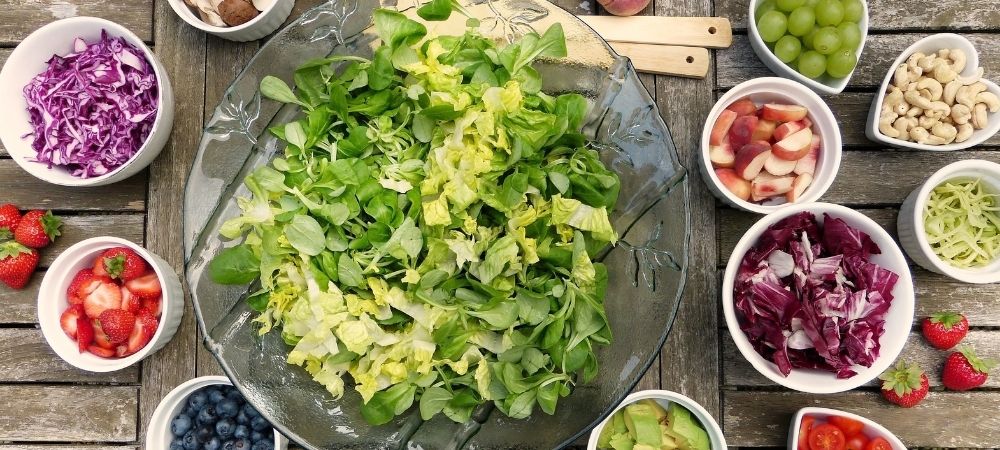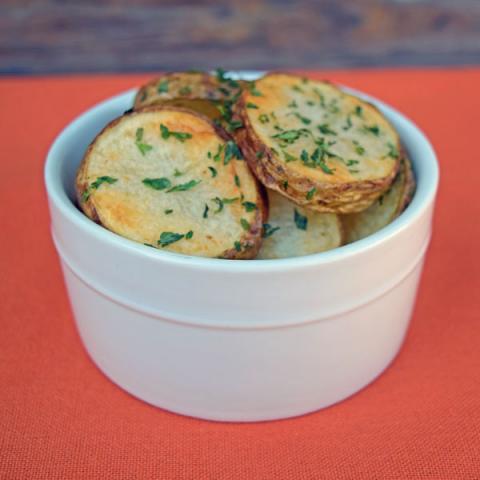
Sometimes people think green salad = lettuce = blah. Not so. The only limits to exciting salads are limits of the imagination.
Begin with fresh salad greens. Enhance the eye appeal and nutrition of a salad by adding colorful fruits and vegetables. Keep it light by limiting the amount of salad dressing to about 1 tablespoon per 1-1/2 to 2 cups of greens. Then make the flavor really POP by adding from one to three of these flavor accents, depending on how many other ingredients are in your salad. Put them either atop or mix them in with your salad.
- Marinated Artichoke Hearts: Enjoy the tangy taste of sliced marinated artichoke hearts in your salad. It's as easy as opening a jar and adding as desired.
- Parmesan Cheese: If your experience with Parmesan cheese is limited to shaking it from a can, try using a vegetable peeler to shave about a tablespoon per serving from a block of cheese. Or, sprinkle freshly grated Parmesan on salads.
- Croutons: Add crunch and flavor with croutons.
- Dried Cherries, Cranberries or Raisins: Add these dried fruits for their flavor and texture. They are also quick easy to add with no preparation required!
- Basil, Chives, Dill or Parsley: Toss small basil leaves or chopped larger ones in with your greens. Try chopped fresh dill. Add some minced chives or parsley. Start with about a teaspoon of herbs per person and adjust according to taste preference.
- Apples or Pears: Slice apples and pears with their skins left on for eye and taste appeal. The skin adds eye appeal and important dietary fiber, as well. The juicy sweetness of pear slices, skin included, also tastes great in salads.
- Olives: Add extra oomph with olives. According to USDA's FoodData Central, one tablespoon of olives provides about 10 calories. Experiment with different types for different flavors such as kalamata or manzanilla.
- Toasted Nuts such as Almonds and Walnuts: Although nuts are a source of fat and calories, they contain mostly unsaturated fat that may help protect against heart disease. They also provide vitamin E, a nutrient that may be good for your heart. Toast nuts to crisp their texture and bring out their rich aroma and taste.
- Red Onions: Slip thin slices of sweet red onions into salads. The National Onion Association recommends after you purchase onions, store them in a cool, dry, ventilated place — not in the refrigerator. Avoid storing onions in plastic bags during storage outside of the refrigerator.
- Oranges: Sliced oranges juice up the flavor of salads and add brightness with their sunny color. Plus, they give you a healthy dose of vitamin C and folate.
- Toasted Sunflower Seeds: Add some vitamin E by tossing a tablespoon of sunflower seeds per serving into salads. One tablespoon provides about 50 calories and mostly unsaturated fat. Toast them for extra flavor.
- Radishes: Thinly slice radishes and sprinkle into salads for their crisp texture and peppery flavor. If the leafy radish tops are attached, remove them before storing. Store unwashed radishes in an open or perforated plastic bag in a refrigerator crisper drawer that is separate from the one in which you store fruits. Wash radishes and trim their roots just before using.
Sources:
Choose Healthy Fats, Academy of Nutrition and Dietetics
FoodData Central, United States Department of Agriculture (USDA)
Fruit and Vegetable Safety, Centers for Disease Control and Prevention
This article has been peer-reviewed. It was originally written by Alice Henneman and reviewed/updated in 2022.
Tags:
Feedback Form
Feedback Form
If you do not see the article, please scroll up the page.







